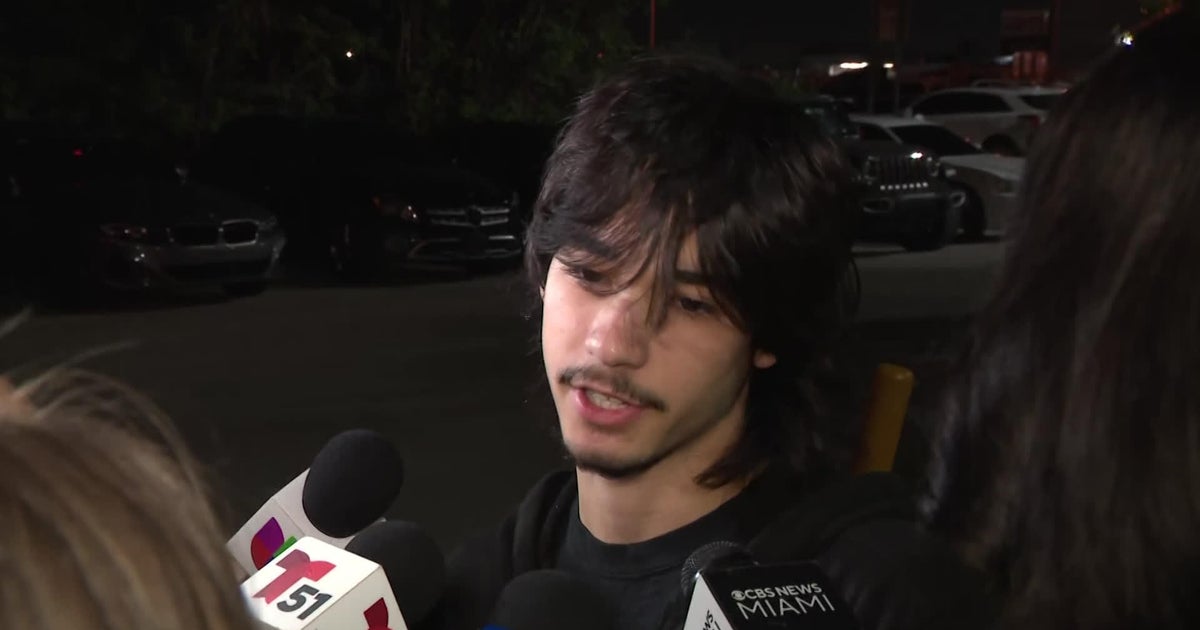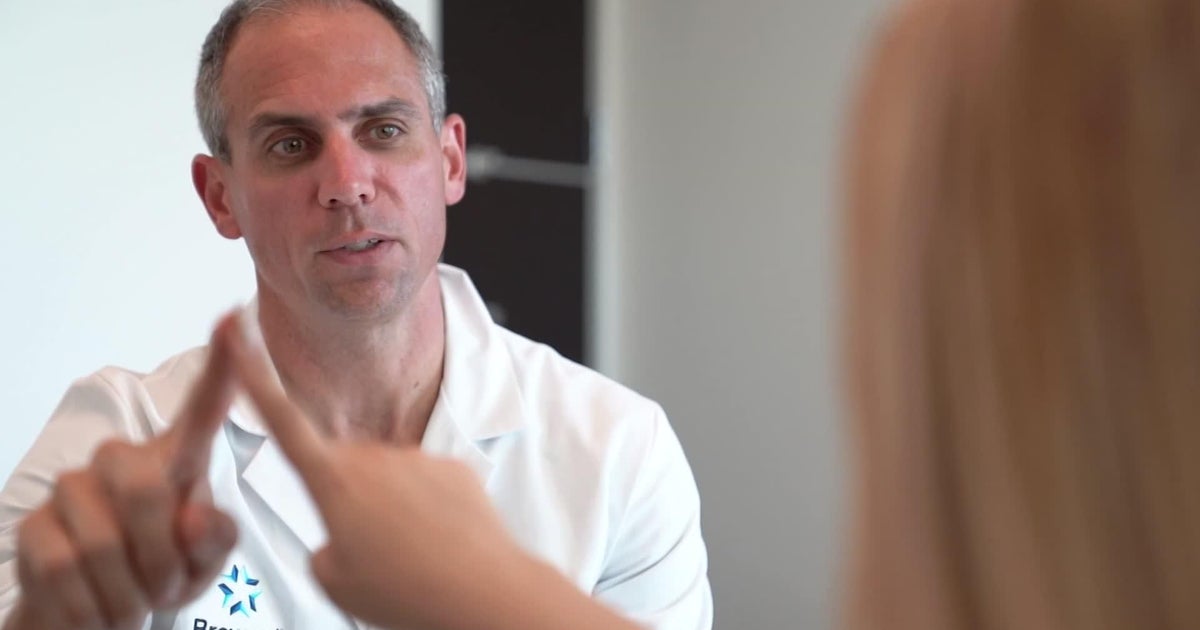Jurors to resume deliberations Tuesday in case of ex-MSD deputy Scot Peterson
FORT LAUDERDALE - A jury will resume deliberating the fate of former school resource officer Scot Peterson on Tuesday.
After deliberating 90 minutes on Monday, Judge Martin Fein called the jury in to say they would pause deliberations until Tuesday.
Deliberations capped a day of closing arguments in the case that has lasted about three weeks.
Prosecutors have charged Peterson with 11 criminal counts, including seven counts of felony child neglect, three culpable negligence and one count of perjury for lying to investigators.
Peterson said he heard only two or three gunshots after arriving at the 1200 building of Marjory Stoneman Douglas High School in Parkland while other witnesses said they'd heard more.
Peterson was the first law enforcement officer on scene, on February 14, 2018, when a lone gunman entered the 1200 building and killed 17 people
Because Peterson arrived after the shooting started he's only charged in connection with the victims on the third floor. That's where teacher Scott Beigel and students Cara Loughran, Meadow Pollack, Joaquin Oliver, Jaime Guttenberg and Peter Wang were killed.
Teacher Stacey Lippel and students Kyle Laman, Marian Kabachenko and Anthony Borges were also shot but survived. Each testified for the state.
The state has accused Peterson, 60, of failing to confront the gunman according to his active shooter training, instead taking cover for more than 45 minutes outside the 1200 building during the attack, which remains the deadliest high school shooting in US history.
"In that moment, while he stood at those doors, every student and every teacher on the third floor was still alive," Assistant State Attorney Kristen Gomes said Monday. "In that moment, choose to go in, or choose to run. And Scot Peterson chose to run."
"He left behind an unrestricted killer to spend the next four minutes and 15 seconds wandering the halls at his leisure," she said. "Because when Scot Peterson ran, he left children trapped inside of the building with a predator unchecked. (From) 2:23 p.m. forward, that predator would fire 70 rounds from the moment that man made the decision not to enter."
Peterson did not take the stand to testify in his defense. But his attorney argued the former deputy for the Broward Sheriff's Office did nothing wrong.
He argued Peterson did not enter the building because he could not tell where the gunshots were coming from due to echoes on campus.
It is an unusual case, in part because prosecutors brought child neglect charges against Peterson under a Florida statute that applies to caretakers, arguing in his capacity as a school resource officer, Peterson was responsible for the protection of the high school's students and staff.
Family members of the victims were in court Monday.
Many say they want accountability.
"We need to send a message you can't stand around while children are murdered," said Max Schacter whose son Alex was killed in the massacre.
On the morning of February 14, 2018, parents taking their kids to school would have had the chance to see Peterson on campus in uniform, Gomes said Monday, adding those parents "would have been absolutely correct to assume that that man's only priority was the safety of their child."
Because Peterson "wasn't just on campus to catch kids with fake IDs, to work on the vaping problem that they were having," she said. He was an "extensively trained" officer who was "there by contract, by job description for the safety of those kids."
The defense previously insisted the statute didn't apply to Peterson, but the judge ruled the determination would be made by the jury.
Either way, the case is also noteworthy for the prosecution of a law enforcement officer over his response to a mass shooting, highlighting expectations for first responders at a time when America's gun violence epidemic shows no signs of abating.
Law enforcement aims to stop shooter, witnesses said.
Prosecutors from the Broward State Attorney's Office rested their case last Wednesday, after almost two weeks of testimony. Their case included a number of witnesses who testified they knew what Peterson claims he did not: The gunshots were emanating from the 1200 building.
"When I looked at him, he just had a blank look on his face," former school Security Specialist Kelvin Greenleaf, who arrived on the scene with Peterson, said during his testimony last week. "There was so much going on, and I can imagine the stress and the pressure that he was under... and I just don't think he realized pretty much what was going on."
The state also called multiple law enforcement officers who told the jury their training dictated they move toward the sound of gunfire to confront a possible shooter or shooters - a directive widely adopted in the wake of the 1999 shooting at Columbine High School in Colorado, Lt. Col. Samuel Samaroo of the Broward Sheriff's Office, who was involved in the department's training, testified.
Broward County Sheriff's Detective John Curcio, the lead investigator of the case against the shooter, similarly testified law enforcement is "supposed to go towards the shots" to locate and confront a gunman.
"The goal is to stop (the shooter) from killing people," said Curcio. "And that doesn't mean killing him. It means slowing him down, it means distracting him, it means anything so those kids can find safety."
Defense rested after two days.
Defense attorney Mark Eiglarsh called several witnesses out of turn during the state's case but rested on Friday after two straight days of testimony including witnesses - former students, staff, and members of law enforcement - who supported Peterson's claim it was difficult to hear where the gunfire was coming from.
Peterson was at the scene for the last four minutes and 15 seconds of the shooting, which lasted about six-and-a-half minutes in total, Eiglarsh has emphasized.
Broward County Sheriff's Deputy Arthur Perry, who responded to the scene and said he stayed outside the building where the shooting occurred, testified he did not learn the details until later in the evening via news reports.
"I didn't learn there was a shooter with victims inside the 1200 building until about 7 p.m. that night, when I looked on Fox News on my phone because there was no communication telling us what was going on," Perry said, underscoring the defense allegations of radio problems contributing to a communications breakdown on the scene, preventing critical information from being shared between agencies.
Perry's testimony aligned with other defense witnesses, including former students and school staff, like teacher Suzanne Camel, who taught in the nearby 700 building. She told jurors the gunshots were incredibly loud and sounded like firecrackers being thrown at her, though she said under cross-examination she'd never heard gunshots before.
Student Tyler Jarboe said he believed gunshots were coming from the west stairwell of the 700 building, where he was in class. Echoes are prominent in that part of campus, he said.
Eiglarsh also called to the stand Jeffrey Morford, then an assistant principal at Marjory Stoneman Douglas High School, who said it was Peterson who ordered a Code Red, perhaps preventing further deaths and injuries among the rest of the student body. The state called the testimony into question on cross-examination: In a 2018 deposition, Morford said he did not recall who ordered the Code Red.
Morford also said Peterson ordered him and Greenleaf to review security footage as the shooting unfolded in hopes of locating the gunman. Taken together, the defense contended, the actions and others illustrate Peterson was not negligent but actively responding to the attack.
"I am glad the world is getting to know what we've known for five years," Eiglarsh told CNN on Friday. "The scene at the school was chaotic and my client did his best to secure it. Hundreds of people were there and were confused about where the shots were coming from."
Only one person was responsible for the shooting, Eiglarsh has argued: The shooter, who pleaded guilty to 17 counts of murder and 17 counts of attempted murder and was sentenced to life in prison without parole.




